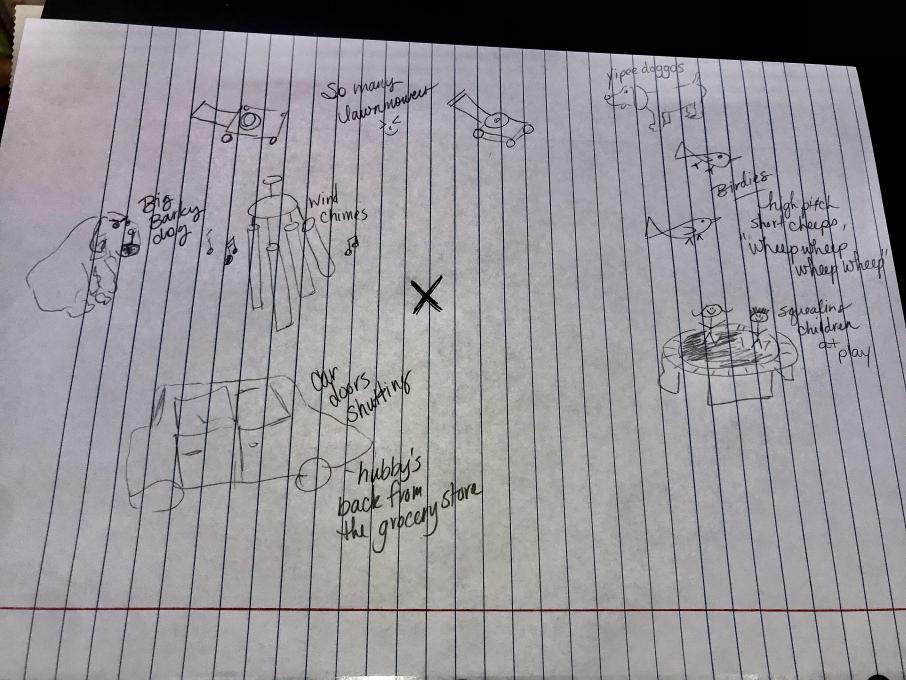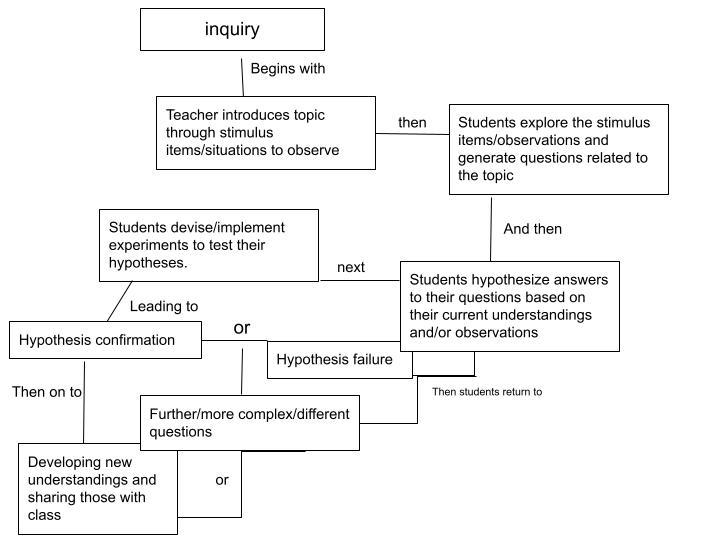Stephanie
Forum Replies Created
-
StephanieParticipant
@Kristin Yeah, most of the time it's either "I don't know" or ...crickets.... I find that when I have them do a think/pair/share for answering questions then I get decidedly fewer of these. The thinking time helps them with the processing, the pairing off with a partner gives the shy ones a smaller audience and the sharing part gives them the option to let the other person speak.
-
StephanieParticipant
@Austin I hope so! My groups meet only once a week so I'm thinking I'll need a "report board" for all of the off-class bird sightings they'll want to tell me about. I can see that taking up A LOT of class time! :)
-
StephanieParticipantI was wondering about how feeder watch would work in a classroom. Can you share any other challenges, insights you might have?
-
StephanieParticipantWe have so many bird nests at my house, this sounds like a great summer project for my son and me. He has loved going outside and using the bird song identifier on Merlin. I am curious how this will work in my classroom with the chromebooks instead of handheld devices.
-
StephanieParticipantI haven't worked with a citizen science activity with my students but I have plans to do so once school starts again next month. I am planning to work on Project Feeder Watch with my students. I anticipate we may have challenges with motivation with a few of my students and that we may run into logistical issues with getting outside in the winter but I don't think either of these challenges will be prohibitive. Expected learning outcomes from this project are that the students will gain a greater appreciation of the birds in our area, that their knowledge of birds in our area will grow, and that they will hone their observation and inferencing skills. I also expect their idea of what a scientist looks like and how they can contribute to science will change to include themselves in the picture.
-
StephanieParticipantI think it begins with modeling how we observe and wonder about the world and by ensuring our classrooms are places where risks are encouraged and not penalized. Ideally if we could go gradeless for this part of the day it would likely lead to less inhibition about wondering and risk taking. It would also help if we could slow down the pace a bit. When you only have 15 min for the science activity, that isn't very conducive to observation. We have to build time into the day and really carve out a space so that observation and wonder can take place.
-
StephanieParticipantThe most impactful thing about creating the sound map was the realization of how many non-natural sounds are in my neighborhood. From the lawnmowers to the windchimes to car doors slamming, so much of what I heard was because of things that are not natural. There were joyful sounds too that I don't often stop to hear, the sound of the neighbor children squealing as they played outside and the yippy dog somewhere far off made me smile. I could encourage my students to use their senses to observe the natural world more by simply getting them outside so they CAN observe the natural world. So much of the past year was spent on a screen, I am very excited to get these kiddos outside and teach them how to really hear and see what's been there all along.

-
StephanieParticipantWith my students, gifted 3-5th graders in a once a week pull-out setting, I think that the hands-on factor, positioning students as people who do science, and working to find solutions to self generated questions based on real world observation will be most beneficial to my students. Gifted kids are almost always motivated by "being in charge. " Both CS and inquiry allow students to feel important and know that their contributions are not just for a grade on the grade card. I am excited to use these programs and strategies with them.
-
StephanieParticipantFraming students as people who do science is the practice I think I use most often...but I'm not sure I am as careful with my words as the article suggested. I think the "we are scientists' helpers" comment is actually something I've used before without thinking about the impact of that statement. Going forward, I'd like to encourage students to see themselves as scientists in a deeper way. I'll be more purposeful with my phrasing and I'd like to begin with some introductory lesson on how CS is citizens DOING SCIENCE...they would love that. I would also like to model the practice of connecting their work globally and locally. WHY ARE WE DOING THIS? is a question I get every single day. Gifted kids, and especially those on the Autism spectrum, need to know the relevance of their work before they buy in. I will be sure to be ready with global and local impact stories to show them why we're doing what we do.
-
StephanieParticipantI've never really done a citizen science project with my learners. My husband is a secondary science teacher and he has worked with the GLOBE program before. I feel like I have a handle on how it will work, my only concerns are that my program is a one-day-a-week setup and I hope that we will be able to get a meaningful level of participation with so little contact time in a school year. In reflecting on the readings, I think citizen science will provide much needed relevance to our activities. It answers the question, "Why are we doing this?" from the get go and will no doubt engage my kiddos in our work even more than a "regular" activity. I have signed us up for the Feeder Watch program and I can't wait to get materials in hand and introduce this to my schools.
-
StephanieParticipantI taught a lesson last year where students had to design a parachute system to slow a lander as it descended towards Mars. We were working with an imagined model of a lander and payload (a cardboard tube with 16 paperclips attached). Students had to drop the tube from a 2 meter height and record the time it took to fall without any parachute system. They then had a limited supply of materials and a weight limit as constraints as they designed, built, and tested various parachute systems. Final designs were tested at the 2 meter height then again at a 3 meter height. While this is more of an engineering lesson than anything else, I think it falls between the structured and guided inquiry levels of inquiry. Students were told what the desired outcome was, given a specific set of parameters and materials, then they were given room to work. They were NOT given a strict set of steps to follow in the designing of their parachutes, nor were they really ever told to make a "parachute" per say...just to make the vehicle descend more slowly. The scientific principles in this lesson were developing and using models, planning and carrying out investigations, and analyzing and interpreting data. If I were going to amend this lesson to make it more of an open inquiry lesson I would probably have the students start by exploring the designs of various descent systems on existing vehicles designed for space. Maybe we'd look at videos, photographs, or scale models. I'd then have them devise "I Wonder" questions about a descent system for a vehicle landing on Mars. They could then self-design a plan for testing their most engaging question.
-
StephanieParticipantI like your drawing of the inquiry process as a cycle. Last year we worked on a NASA guided project and the engineering design model we used reminds me of this quite a bit. I think any time we can get kids to understand that science and engineering isn't just a list of rigid steps but more of a natural process like art, then we're doing our jobs!in reply to: Virtual Educator Retreat: Intro to Inquiry #824470
-
StephanieParticipantI think that inquiry is exposing students to a topic through various stimulus items then having them pose questions they have related to the topic. After the questioning phase the students will be able to explore the ideas they have through hands-on activities facilitated by the teacher but almost completely student led. In my understanding of inquiry, students come to their own understanding of concepts through exploration of materials and experimentation with ideas. These understandings may lead to new and more complex questions. These understandings should be communicated with the class and teachers can guide students to more work if their understandings are incomplete.
 in reply to: Virtual Educator Retreat: Intro to Inquiry #824468
in reply to: Virtual Educator Retreat: Intro to Inquiry #824468

